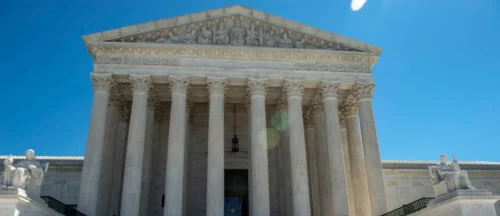President Signs Debt Ceiling Bill, Federal Default Averted

The Fiscal Responsibility Act of 2023, also known as “the debt ceiling bill” has been signed into law by the President of the United States, eliminating the threat of a federal government loan default predicted as early as June 5, 2023.
The Fiscal Responsibility Act of 2023 addresses the loan default issue and contains several additional provisions, such as a redirect of some funding originally meant for the Internal Revenue Service and a requirement to “claw back” unused COVID-19 relief funds.
We explore the various aspects of the bill below.
A Brief History of the Fiscal Responsibility Act of 2023
AP News reported in March 2023 that this year’s debt ceiling debate, a typical part of doing business in the House and Senate, had a different “tone” in 2023.
The AP says, “A new Republican majority in the House is itching for a spending showdown and determined not to yield.”
Plenty of “no compromise” type promises were made, but that’s not how the federal government ultimately gets things done.
The bill was indeed contested on both sides of the aisle, thanks at least in part to some of the non-debt-ceiling additions to the bill (see below), such as defunding the IRS to the tune of some $20 billion and ending a pause of federal student loan payments.
In spite of that, there was plenty of bipartisan negotiation, and despite fears that no reasonable deals could be made, both the House and Senate passed the debt ceiling bill and sent it to the President’s desk for signature over the June 3, 2023 weekend.
Related: TRICARE Basics
What the Fiscal Responsibility Act of 2023 Does
The Fiscal Responsibility Act of 2023 “suspends” the public debt limit from now until the first day of 2025.
There will be no threat of government default on its financial obligations from now until 1 January 2025 and no need to debate the debt ceiling issue in the meantime…until the new deadline nears.
There are other features of the Act, including the following requirements. Note that these are not directly associated with the debt ceiling, but they are all the law of the land now that the President has signed the bill.
Veteran Healthcare Protected
The debt ceiling bill maintains full funding for veterans’ health care. There is also support for the VA PACT Act’s toxic exposure fund; some $15 billion is intended for this VA effort in fiscal year 2024.
Non-Defense Discretionary Spending Capped For 2023
Under the debt ceiling bill, there is a cap on non-defense discretionary spending. The limit is rolled back to the previous year’s levels and a spending limit of 1% annual growth for the next six years for certain “topline” government expenditures.
Non-defense discretionary spending for fiscal 2024 has an upper limit just above $700 billion. From that amount, around $120 billion is said to be earmarked for veteran medical care.
Student Loan Suspension to End
At the end of the summer of 2023, federal student loan payments must resume, and there is a restriction on extending the suspension again.
Expands Work Requirements for those Receiving SNAP
Under prior law, those 18 to 49 are allowed SNAP, sometimes called food stamps, only for a limited time (three months out of every three years) unless they meet employment requirements, including a 20-hour-per-week job or meet alternative requirements.
Under the debt ceiling bill, the upper age limit is raised to 55. The new laws expand exemptions in these areas for the homeless, for veterans, and other groups.
These changes are not permanent. They end in 2030.
No Changes to Clean Energy Measures in the Inflation Reduction Act
Some in the GOP sought to repeal the Inflation Reduction Act’s clean energy provisions such as tax credits via the debt ceiling bill. This did not happen and is not part of the debt ceiling bill.
The Mountain Valley Pipeline
The Fiscal Responsibility Act is meant to “expedite” the Mountain Valley Pipeline, a natural gas pipeline project located in West Virginia.
Related:
- Active Duty Benefits Guide
- May is Military Spouse Appreciation Month
- Military Unemployment Rates Lower Than Civilian Counterparts
- TRICARE Open Season Checklist
About the author
Editor-in-Chief Joe Wallace is a 13-year veteran of the United States Air Force and a former reporter/editor for Air Force Television News and the Pentagon Channel. His freelance work includes contract work for Motorola, VALoans.com, and Credit Karma. He is co-founder of Dim Art House in Springfield, Illinois, and spends his non-writing time as an abstract painter, independent publisher, and occasional filmmaker.


